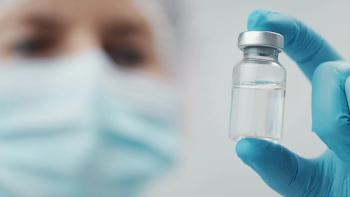
- Pharmaceutical Technology-10-02-2015
- Volume 38
- Issue 10
Investigating Biologics
Susan Schniepp, distinguished fellow, and Andrew Harrison, chief regulatory affairs officer and general counsel, both of Regulatory Compliance Associates, discuss performing investigations of biological products.
Susan Schniepp, distinguished fellow, and Andrew Harrison, chief regulatory affairs officer and general counsel, both of Regulatory Compliance Associates, discuss performing investigations of biological products.
Q: I work for a contact manufacturing organization that manufactures traditional and biotech pharmaceutical products, and I am responsible for performing investigations and reporting the results to our clients. It would help me perform my job better if you could tell me the difference between performing investigations for a biological product vs. a traditional pharmaceutical product?
A: The short answer is there is no process difference when performing deviation investigations for traditional pharmaceutical products vs. biotech products. The differences lie in the complexity of the manufacturing processes and thus the variables that need to be considered regarding what could have impact on the deviation. Chemical process, although sometimes quite complex, often have fewer variables even though many of the categories are the same. For instance, when investigating an unknown impurity in a biological process from a simple oligopeptide fermentation process, the considerations may include fermentation conditions (e.g., time, temperature, oxygen uptake, byproduct production), potential contamination of reactants including master cell banks and fermentation reagents, equipment integrity, and performance. Further considerations for the downstream purification process variables and the effect of a final configuration (e.g., folding) also need to be considered.
The purpose of performing an investigation into a deviation is to determine why the deviation happened and what its impact was on the product quality. To determine the impact of the deviation on the product quality, it is important to determine the ‘root cause’ of the deviation. The process used in the industry to determine root cause is, of course, the investigation procedure. This procedure, regardless of whether the product you are investigating is biotech or traditional, should require the investigator to review various systems and determine whether they were the cause of the deviation being investigated.
It is important to remember when performing an investigation to keep in mind a few general rules. Remember, one size does not fit all. Simple errors require simple corrections while serious deviations require broader investigations. The complexity of the investigation is related not only to the seriousness of the investigation but also to the complexity of the factors that could influence the outcome.
The best tool to have during any investigation is inquisitiveness. Continuing to ask questions and avoid assumptions will lead to a better outcome. Using other tools, such and fishbone diagrams and determination of most probable number (MPN), are to be encouraged but they do not take the place of asking questions. In performing an investigation, it is important for the investigator to widen their perspective and look for ways to relate similar issues. The best way to ensure events are not related is to try and relate them, not the other way around. Keep in mind that human error is rarely a true root cause. There is usually something in the process that causes that human error.
And finally, always verify the facts of the investigation. It is also important to include a historical review. This review should determine if the deviation occurred with this or other products, with the specific manufacturing line or other manufacturing lines and/or with the operators or other operators. The historical review can help you prioritize the resources and your detailed system review. In addition, some companies make use of tools (fishbone diagram, MPN) to help prioritize resources. These tools, if used correctly, can be helpful in determining root cause but remember, they are just tools and do not take the place of thinking.
The detailed investigation should include a review of various systems. The systems most often reviewed are equipment and machinery, the manufacturing process, the raw materials used in manufacturing, the specifications, the environment, and finally, the operators. This is not to imply that these systems are the only areas you should look at during the investigation but that these are the most probable areas where you will uncover the root cause of the deviation. Each investigation must address the following elements: root cause, impact to the material or product, the immediate correction taken, the corrective action to prevent re-occurrence for specific product/operation, and the preventive action taken to prevent re-occurrence for all products/operations.
Once these elements have been investigated, results from the investigation must be documented. The written narrative should clearly explain what happened, when it happened, and who was involved or observed what happened. The narrative documents the solution and rationale for the root cause that was determined through the investigation process.
The key to any successful investigation is not stopping too soon and assuming you have the solution prior to completing the investigation. Ask questions until you can think of no more questions to ask and be sure to document the answers to your questions. If you follow your investigation procedure and thoroughly document your results, you should have an acceptable investigation regardless of whether you are manufacturing a traditional product or a biotech product.
Article DetailsPharmaceutical Technology
Vol. 39, No. 10
Pages: 98
Citation: When referring to this article, please cite it as S. Schniepp and A. Harrison, “Investigating Biologics,” Pharmaceutical Technology39 (10) 2015.
Articles in this issue
about 10 years ago
Identifying Powder Properties that Define Process Performanceabout 10 years ago
Connecting MES to Process Controlabout 10 years ago
Parenteral Packaging Advancesabout 10 years ago
Serialization Shake Outabout 10 years ago
Advances in Fluorination Chemistry for API Synthesisabout 10 years ago
Small-Molecule API CMOs Are Thrivingabout 10 years ago
Modular Platform for Agitator Bead Mill Optimizes Grindingabout 10 years ago
Self-Contained Laboratory Homogenizer Prepares Injectable Drugsabout 10 years ago
Microfluidics Systems Designed for Flow-Chemistry ExperimentsNewsletter
Get the essential updates shaping the future of pharma manufacturing and compliance—subscribe today to Pharmaceutical Technology and never miss a breakthrough.





